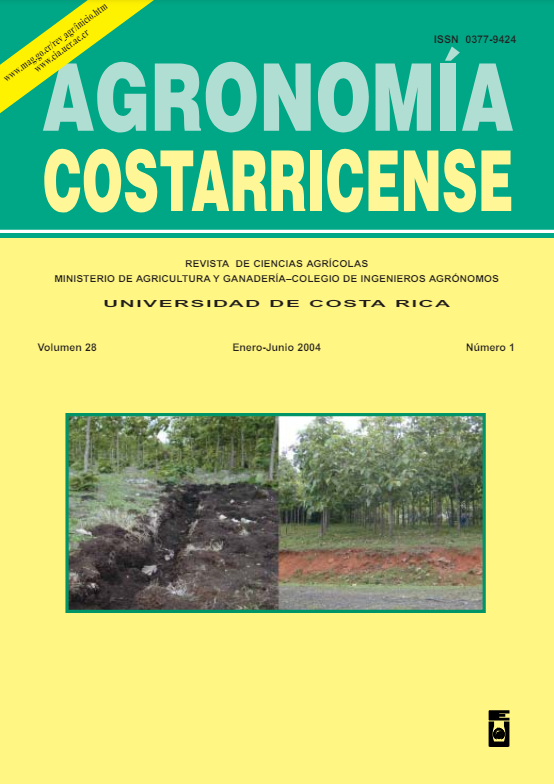Abstract
The growth pattern of jalapeño pepper plants, cultivar Hot, was analyzed from May through November 1995, in Alajuela, Costa Rica. A complete-randomized-block experimental de sign with four replications was used, where treatments corresponded to sampling periods. Eight central plants of the useful plot was sampled every 14 days, starting with 85% seedlings emergence (26 days after planting-DAP). The leaf area and dry weight of each plant section (root, foliage, flower and fruit) were measured and used to determine the physiological and morphological indexes. The plant showed a sigmoidal growth curve, with the following stages: a- from 26 to 82 DAP, characterized by slow growth, as the plant was small and its root and leaf systems were just starting to develop; b- from 83 to 110 DAP, comprises the rapid vegetative and reproductive growth phases. At this stage the plant shows the highest values on relative growth and net assimilation rates (RGR and NAR). The leaf area index (LAI) as well as the harvest index (K) are increasing. Besides, both the leaf area and the root weight ratios (LAR and RWR) show the most important reduction; c- from 111 through 152 DAP, the growth rate gradually decreases. Vegetative and reproductive growth is smaller than the one in the previous phase. Values of RGR, NAR and LAR are decreasing and K re mains constant; d- from 153 to 166 DAP, the plant reaches maturity and the growth rates tend to stabilize. The RGR value is close to zero and the NAR, LAR and RWR values are low and constant; e- from 167 to 180 DAP, the plant shows senescence signs and dry matter content decreases. The RGR shows negative values. The biomass production is linked to the phenology of the plant, specially at blooming and fruiting. The plant invests similar amounts of photo-assimilates for the production of fruits and the vegetative parts. Besides, the plant limits its vegetative growth when fruiting starts, specially when the fruits present the highest growth rates.
##plugins.facebook.comentarios##

This work is licensed under a Creative Commons Attribution-NonCommercial-NoDerivatives 4.0 International License.
Copyright (c) 2024 Agronomía Costarricense


